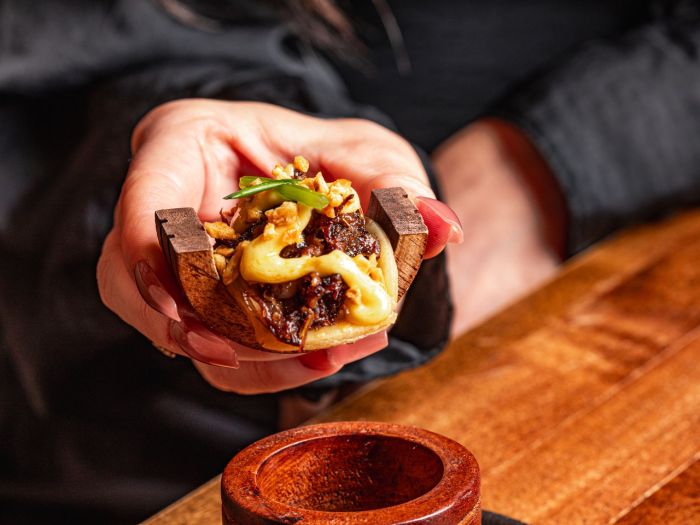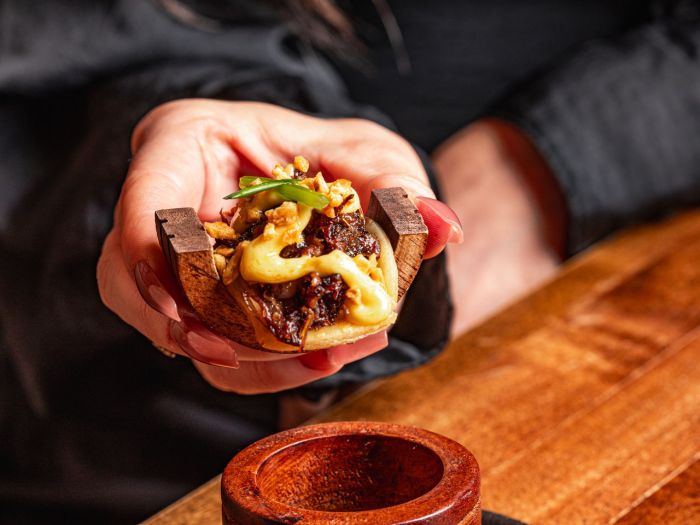Best time to visit Nova Scotia? It depends! From vibrant spring blossoms to breathtaking fall foliage, and the excitement of winter sports to the tranquility of summer, Nova Scotia’s beauty unfolds throughout the year. This guide delves into the best time for your unique interests, considering everything from weather patterns to events, outdoor activities, and even accommodation prices.
Discover the ideal season for experiencing Nova Scotia’s charm, whether you’re a nature enthusiast, a festival-goer, or a winter sports fanatic. We’ll explore the diverse landscapes, highlight the exciting events, and help you plan the perfect trip. Prepare to be amazed by the incredible options that Nova Scotia offers!
Seasonal Considerations
Nova Scotia’s beauty unfolds in different ways throughout the year, each season offering unique charms and experiences. From vibrant spring blossoms to the breathtaking hues of autumn, understanding the seasonal variations is key to planning the perfect trip. This section delves into the distinct weather patterns of each season, highlighting their impact on outdoor activities and tourism experiences.Nova Scotia’s climate is moderated by the Atlantic Ocean, resulting in generally mild temperatures compared to other parts of Canada.
However, significant variations occur between seasons, impacting the suitability of different activities. Understanding these variations is essential for a memorable and enjoyable visit, allowing you to fully appreciate the province’s natural splendor and cultural attractions.
Spring
Spring in Nova Scotia is a time of renewal and rebirth. Temperatures gradually increase, with average highs ranging from 10°C to 18°C. Precipitation can be somewhat unpredictable, but generally less than the winter months.
- Flowering trees and vibrant blooms begin to emerge, painting the landscape with colors of spring.
- Outdoor activities like hiking, biking, and kayaking become increasingly enjoyable as the weather warms up.
- Many farmers markets and festivals open, offering local produce and cultural experiences.
Summer
Summer in Nova Scotia is a popular time for tourism. The weather is generally warm and sunny, with average highs ranging from 20°C to 28°C. The longer daylight hours allow for ample opportunities for outdoor adventures.
- Beaches and coastal areas are bustling with tourists enjoying swimming, sunbathing, and water sports.
- Hiking trails are well-traveled as the weather is ideal for outdoor exploration.
- Festivals and concerts take place throughout the province, offering a vibrant cultural scene.
Autumn
Autumn brings stunning displays of fall foliage in Nova Scotia. Average temperatures typically range from 10°C to 15°C. The crisp air and colorful landscapes make for a picturesque time to visit.
- Hiking and scenic drives are enhanced by the vibrant colors of the trees.
- Harvest festivals and events celebrate the region’s agricultural bounty.
- Cooler temperatures can still allow for some outdoor activities, but be prepared for the potential for rain.
Winter
Winter in Nova Scotia offers a different type of charm. Average temperatures range from -5°C to 5°C, with occasional periods of colder weather. Snowfall is common, but the province is well-equipped for winter visitors.
- Skiing, snowboarding, and snowshoeing are popular winter activities.
- Many communities host winter festivals and events, celebrating the season’s unique atmosphere.
- Outdoor activities require appropriate gear and preparation, considering the potential for snow and ice.
Average Temperatures (Celsius)
| Location | January | April | July | October |
|---|---|---|---|---|
| Halifax | -2 / 1 | 4 / 12 | 18 / 25 | 8 / 15 |
| Dartmouth | -1 / 2 | 5 / 13 | 19 / 26 | 9 / 16 |
| Sydney | -3 / 0 | 6 / 14 | 20 / 27 | 10 / 17 |
Note: Average high/low temperatures are approximate and may vary based on specific microclimates and weather patterns.
Events and Festivals
Nova Scotia boasts a vibrant calendar of events and festivals, catering to diverse interests and showcasing the province’s rich culture and heritage. From lively music performances to captivating art displays and thrilling sporting competitions, there’s always something happening to immerse visitors in the local scene. These events often provide a unique opportunity to experience the spirit of Nova Scotia and connect with the local community.
Major Events and Festivals
Nova Scotia’s events and festivals are spread throughout the year, offering something for every visitor. These celebrations vary in scale and style, from intimate gatherings to large-scale public spectacles. Their diversity ensures a captivating experience for anyone looking to explore the province.
Monthly Breakdown of Events
A comprehensive overview of major events and festivals throughout the year.
| Month | Type of Event | Location | Dates | Description |
|---|---|---|---|---|
| June | Music Festival | Various Locations (Halifax, Sydney, etc.) | Varied Dates | Numerous music festivals featuring local and international artists. Often include various genres like folk, rock, and jazz. |
| June | Arts Festival | Halifax | Mid-June | A renowned arts festival showcasing visual and performing arts, attracting artists and audiences alike. |
| July | Maritime Music Festival | Various Locations (Halifax, Sydney, etc.) | Varied Dates | A series of music events celebrating Nova Scotia’s rich musical heritage. |
| August | Folk Music Festival | Various Locations (Halifax, Yarmouth, etc.) | Varied Dates | Festivals featuring traditional folk music performances, workshops, and cultural displays. |
| September | Fall Festival | Various Locations | Varied Dates | Celebrations often involving harvest themes, food, crafts, and family activities. |
| October | Halloween Events | Halifax, Lunenburg, and other towns | October 26-31 | Local communities often host events celebrating Halloween, including parades, costume contests, and haunted houses. |
| November | Christmas Festival | Halifax | November 20-December 24 | The Halifax Christmas Festival features a Christmas market, light displays, and festive performances. |
Outdoor Activities: Best Time To Visit Nova Scotia
Nova Scotia boasts a stunning array of outdoor adventures, beckoning visitors to explore its breathtaking landscapes. From towering mountains to pristine coastlines, the province offers a plethora of activities that cater to every taste and skill level. Choosing the best time to visit often hinges on the specific outdoor pursuits you have in mind, as the seasons profoundly impact the experience.
Different activities thrive in different weather conditions and seasons.Understanding how weather conditions influence outdoor activities is key to maximizing your enjoyment and minimizing any potential discomfort. The changing seasons in Nova Scotia present unique challenges and opportunities for outdoor enthusiasts. Careful planning based on your preferred activities and anticipated weather conditions will lead to a memorable experience.
Hiking
Hiking trails in Nova Scotia offer varied terrain, from gentle walks to challenging climbs. The best time to hike is during the spring and fall, when the weather is generally pleasant, and the foliage offers a stunning visual backdrop. Spring brings new life to the trails, while fall showcases the vibrant colors of the changing leaves. Summer can be hot and humid, making longer hikes strenuous, while winter’s icy conditions necessitate special gear and caution.
Consider the specific trail’s elevation and difficulty when selecting your visit time.
Biking
Nova Scotia’s extensive network of cycling routes provides a fantastic opportunity to explore the countryside. Spring and fall are ideal for cycling, with pleasant temperatures and less intense sunlight. Summer’s warm weather offers the opportunity to enjoy the trails, though heat and humidity can make long rides challenging. Winter conditions, with ice and snow, are unsuitable for cycling.
Road cyclists may prefer spring and fall due to reduced traffic compared to summer. Mountain bikers might prefer the drier conditions of summer for certain trails, while some may prefer the spring and fall to avoid excessive heat or rain.
Kayaking and Canoeing
The province’s stunning coastline provides ample opportunities for kayaking and canoeing. Spring and fall offer moderate temperatures and calmer waters, making them excellent seasons for these activities. Summer can be ideal for exploring sheltered coves and bays, but stronger winds and potential for choppy waters should be considered. Winter, with its icy conditions and often rough seas, presents significant safety concerns.
Experienced paddlers might find opportunities for unique experiences in winter.
Whale Watching
Whale watching tours are a popular activity in Nova Scotia, particularly during the migration season. Spring and fall are typically the best times to spot whales, as they are more likely to be in the area. Summer months can also provide opportunities, but the specific species and their migratory patterns will influence the best viewing time. Winter is generally not recommended for whale watching due to the harsh weather conditions and the possibility of reduced visibility.
The specific location and the particular species of whale being observed should be considered when determining the ideal viewing season.
Weather Considerations
| Season | Temperature | Precipitation | Sunlight | Suitability for Activities |
|---|---|---|---|---|
| Spring | Mild | Moderate | Increasing | Ideal for hiking, biking, and kayaking |
| Summer | Warm to hot | Variable | High | Suitable for many activities but with considerations for heat |
| Fall | Moderate to cool | Variable | Decreasing | Excellent for hiking, biking, and whale watching |
| Winter | Cold | Snow, ice | Low | Limited outdoor activities due to weather conditions |
“The best time to visit Nova Scotia for outdoor activities depends largely on your preferences and the specific activities you plan to engage in.”
Accommodation and Pricing

Nova Scotia offers a diverse range of accommodations to suit every budget and preference. From cozy bed and breakfasts to luxurious resorts, you’ll find options perfect for solo adventurers, couples, families, or groups. Understanding the price fluctuations throughout the year is crucial for planning a trip that fits your budget.
Accommodation Options
Nova Scotia boasts a wide array of accommodation options. Hotels cater to diverse needs with varying levels of amenities and services. Vacation rentals, like cottages and houses, offer more space and privacy, ideal for families or groups. Campgrounds provide a more budget-friendly and immersive experience with access to nature.
Seasonal Price Variations
Accommodation prices in Nova Scotia fluctuate significantly depending on the season. Peak season, typically encompassing the summer months, sees the highest demand and consequently, the highest prices. Off-peak seasons, such as spring and fall, offer more affordable rates. Winter, while experiencing a lull in tourism, also sees a reduction in prices, presenting an opportunity for budget-conscious travelers.
Factors Influencing Price Fluctuations
Several factors contribute to the variation in accommodation prices. Demand is a primary driver, with higher demand during peak season resulting in higher prices. Availability also plays a role. If a specific property or type of accommodation is in high demand, prices will increase. Location is another key factor, with properties in popular tourist destinations often commanding higher prices.
The amenities offered also influence pricing, with luxurious accommodations and services typically costing more.
Average Accommodation Prices (Example)
The table below illustrates the approximate average price differences between peak and off-peak seasons for various accommodation types. These figures are illustrative and may vary depending on specific location, amenities, and the time of year.
| Accommodation Type | Peak Season (Summer) Average Price (CAD) | Off-Peak Season (Spring/Fall) Average Price (CAD) |
|---|---|---|
| Hotels | $250-$400 per night | $150-$300 per night |
| Vacation Rentals (Cottages) | $500-$800 per night | $300-$600 per night |
| Campgrounds | $50-$100 per night (per site) | $30-$70 per night (per site) |
Crowds and Popularity

Nova Scotia, a captivating province with stunning landscapes and rich history, attracts a significant number of tourists each year. Understanding the seasonal fluctuations in visitor volume is crucial for planning your trip and ensuring an enjoyable experience. The popularity of certain attractions can significantly impact the overall experience, from potential crowds to increased prices.Nova Scotia’s popularity is undeniable.
The province’s charm, whether it’s the rugged coastline, charming towns, or vibrant festivals, draws visitors from near and far. However, the sheer volume of tourists can significantly alter the character of the destination. Knowing when to visit can make a difference in experiencing the province at its most authentic and less crowded.
Nova Scotia’s stunning scenery is best enjoyed during the shoulder seasons, spring and fall. The vibrant colours of autumn are breathtaking, but if you’re looking to avoid the summer crowds and still enjoy pleasant weather, spring is a fantastic time to visit. Before you head out, checking out a reliable hidden camera detector like the navfalcon hidden camera detector amazon might be a smart idea.
Just remember to plan your trip around the best time to see the incredible natural beauty that Nova Scotia has to offer!
Visitor Volume by Season
The tourist volume in Nova Scotia varies considerably throughout the year. Summer months, particularly July and August, are typically the busiest, with peak activity concentrated around major events and festivals. Shoulder seasons, spring and fall, offer a more balanced experience, with fewer crowds and potentially lower prices for accommodations and activities. Winter, while less crowded, often attracts tourists interested in outdoor activities like skiing and ice fishing.
The seasonal shifts are crucial to understand for a smoother travel experience.
Impact of Crowds on Experiences
Large crowds can significantly impact the visitor experience. Popular attractions, such as historical sites or scenic overlooks, might become congested, potentially reducing the opportunity to fully appreciate the surroundings. Lines for activities and attractions can also be lengthy. This is especially noticeable during peak season. Conversely, off-season travel often offers a more relaxed and intimate experience.
Visitor Volume and Cost of Activities/Accommodation
Visitor volume directly correlates with the cost of activities and accommodations. During peak season, hotels and other accommodations often increase their prices to reflect the higher demand. Activities, especially popular tours and excursions, typically charge higher prices to accommodate the larger number of participants. This is a direct reflection of supply and demand. Off-season visitors can frequently enjoy better deals on these items.
Average Visitor Numbers per Month at Popular Attractions
| Month | Average Visitor Numbers (Estimated)
|
Average Visitor Numbers (Estimated)
|
Average Visitor Numbers (Estimated)
|
|---|---|---|---|
| January | 1000 | 500 | 1500 |
| February | 1200 | 600 | 1800 |
| March | 1500 | 700 | 2000 |
| April | 2000 | 800 | 2500 |
| May | 2500 | 1000 | 3000 |
| June | 3000 | 1200 | 3500 |
| July | 4000 | 1500 | 4500 |
| August | 4500 | 1800 | 5000 |
| September | 3500 | 1500 | 4000 |
| October | 2500 | 1200 | 3000 |
| November | 1800 | 800 | 2500 |
| December | 1500 | 600 | 2000 |
Note: These are estimated visitor numbers and can vary based on specific events or weather conditions. Data is illustrative and not exhaustive.
Specific Interests
Nova Scotia’s beauty unfolds in diverse ways throughout the year, offering unique experiences for various interests. Understanding the best time to visit, tailored to your specific passions, can significantly enhance your trip. Whether you crave the thrill of winter sports, the serenity of fall colours, or the excitement of wildlife encounters, Nova Scotia has something to offer every season.Planning your trip around specific interests allows you to maximize your time and fully immerse yourself in the province’s unique charm.
This section delves into the optimal times for various activities, highlighting the advantages and disadvantages of visiting during different seasons.
Whale Watching
Whale watching tours are a popular activity in Nova Scotia, with sightings frequently occurring from spring through fall. The best time for optimal whale watching is typically from May to September. During these months, the waters are warmer, and the whales are often more active, making sightings easier. However, the peak season for whale watching is generally in June and July, when many species are at their most active.
Nova Scotia’s stunning scenery is best enjoyed during the shoulder seasons, spring and fall. The vibrant colours of autumn and the budding flowers of spring make for incredible photo opportunities. For a completely different adventure, consider a cycling safari through Botswana and Tanzania, like the Wagora Bike Ride, part of a Singita experience. cycling safari botswana tanzania wagora bike ride singita explore These destinations offer a unique way to experience the wildlife, and the best time to visit would depend on the specific region.
Still, for the best Nova Scotia experience, spring and fall are a solid bet.
Spring and fall can still yield sightings, but the chance of encountering the whales may be slightly reduced compared to the peak season.
Fall Foliage
Nova Scotia’s fall foliage is a spectacular sight, with vibrant reds, oranges, and yellows painting the landscape. The optimal time to witness this natural spectacle is generally from late September to early October. The exact timing can vary slightly depending on weather patterns and the specific location within the province. While the foliage can still be beautiful in mid-October, the peak intensity and visual splendour tend to be concentrated during this period.
The advantage of visiting during this period is the chance to witness the breathtaking colours in their prime. However, this period can also experience higher tourist volumes.
Winter Sports
Winter sports enthusiasts will find Nova Scotia a haven from December to March. The province boasts numerous ski resorts and cross-country ski trails. The snow conditions are typically at their best during this period, offering ideal conditions for skiing, snowboarding, snowshoeing, and ice fishing. Visiting during this time allows for the full enjoyment of winter activities. However, be prepared for potentially colder temperatures and reduced daylight hours.
The quality of the experience depends heavily on consistent snowfall and temperatures suitable for various activities.
Nova Scotia’s stunning scenery is best enjoyed during the shoulder seasons, spring and fall. The vibrant colours of autumn are breathtaking, while spring offers a burst of life. For a truly memorable experience, consider planning your trip around the best museums in Tokyo. best museums in tokyo offer a glimpse into Japanese culture and history, perfect for a cultural side trip before or after your Nova Scotia adventure.
Ultimately, the best time to visit Nova Scotia depends on your preferred weather and activities.
Outdoor Activities
- Summer offers optimal conditions for hiking, biking, kayaking, and exploring coastal trails. The warm weather and long daylight hours make it ideal for outdoor activities. However, summer can also experience higher tourist volumes.
- Spring provides a transitional period, perfect for starting outdoor activities as the weather warms up. You can find pleasant temperatures and fewer crowds compared to the peak summer months. However, spring weather can be unpredictable.
- Autumn, while perfect for fall foliage viewing, is also great for exploring the province’s outdoor trails. The cooler temperatures and crisp air create a unique ambiance for hiking and outdoor adventures. The advantage of visiting in autumn is the combination of the fall foliage and pleasant outdoor temperatures. The disadvantages include the potential for shorter daylight hours and potentially inclement weather.
- Winter is ideal for activities like snowshoeing, cross-country skiing, ice skating, and ice fishing. While the weather can be frigid, the opportunity to experience the province’s winter wonderland is exceptional. The quality of the winter experience is dependent on the amount of snowfall and the consistency of the cold temperatures.
Accessibility and Transportation
Nova Scotia’s beauty is best experienced when you can get around easily and safely. The province offers diverse transportation options, but the best time to visit often hinges on your chosen method and your tolerance for potential challenges. Factors like road conditions, weather, and seasonal closures impact travel plans.Accessibility to attractions and activities varies significantly depending on the season.
This is especially true for those who prefer to explore the province’s stunning coastline, mountainous regions, and charming towns by car. Understanding these factors allows visitors to tailor their trip for optimal enjoyment and safety.
Road Conditions and Weather
Road conditions in Nova Scotia are heavily influenced by the weather. Winter months bring snowfall and ice, leading to significant closures and reduced accessibility. Spring can also present challenges with unpredictable weather patterns, potentially causing flooding or icy patches. Summer and fall, while generally pleasant, can experience sudden storms and localized weather phenomena. It’s crucial to monitor weather forecasts and road conditions before embarking on any trip, especially during these less predictable times.
Accidents and delays can be substantial if one does not plan accordingly.
Transportation Options
Nova Scotia provides a range of transportation options. For the most scenic routes, car travel is an excellent choice. However, the province’s extensive network of ferries connects many islands and coastal communities. Train travel is available in select areas and can provide a different perspective of the landscape. Public buses offer a cost-effective way to travel, though their routes may not be as extensive as other options.
Air travel is convenient for reaching specific locations, but it’s often more expensive. The best time to visit for each mode of transportation will differ.
Best Time to Visit Based on Transportation
- Car Travel: Summer and fall often offer the best conditions for road travel, but careful monitoring of weather patterns is crucial. Spring can present challenges with potential flooding or icy patches, while winter months are often associated with significant road closures and potentially hazardous driving conditions. Summer’s pleasant weather and reduced risk of severe weather makes it a popular time to drive, but this high demand can mean increased traffic.
- Ferries: Ferry schedules and availability can be affected by weather conditions, especially during winter months. Spring and fall can experience some weather-related disruptions, though summer often sees more frequent service. Ferry schedules are crucial for planning and ensuring timely travel between islands and coastal communities.
- Train Travel: Train travel is often ideal in the spring, summer, and fall. These months offer comfortable travel with less risk of severe weather delays. Winter conditions can sometimes lead to delays or cancellations, affecting travel plans.
- Public Buses: Public buses are a reliable option throughout the year, although their routes may be limited in some areas. Winter months might experience delays due to inclement weather. Spring, summer, and fall offer a consistent service, making it an ideal option for visitors wanting a more relaxed travel experience.
- Air Travel: Air travel is typically unaffected by seasonal weather changes. However, it’s important to note that flight schedules can vary. This makes it a useful option for those seeking flexibility in travel dates, though it is often the most expensive option.
Local Experiences
Nova Scotia boasts a rich tapestry of local experiences, from vibrant festivals to intimate cultural events. These experiences offer a deeper understanding of the province’s unique character and the best time to visit is often determined by the specific event or activity you seek. The seasons themselves also influence the local experiences available, with each one showcasing different aspects of Nova Scotian culture.Understanding the cultural significance of these events allows visitors to engage more meaningfully with the province’s people and heritage.
This deeper connection enhances the overall travel experience, fostering a richer appreciation for the destination.
Spring Experiences, Best time to visit nova scotia
Spring in Nova Scotia is a time of renewal and awakening. Flowering gardens and blooming landscapes are accompanied by a surge in outdoor activities. This period often marks the start of farmers’ markets, offering fresh produce and local crafts.
- Farmers’ Markets: These markets are a great way to sample fresh local produce and support local farmers. They often feature artisan crafts, homemade goods, and live music. The vibrant energy of these markets is a great way to experience the local community.
- Outdoor Festivals: Spring often marks the beginning of outdoor music festivals and cultural events. Many festivals are designed to celebrate spring’s arrival and the blossoming of nature.
- Flowering Gardens and Botanical Tours: Spring is the perfect time to visit various flower gardens and botanical tours to witness the spectacular displays of spring blossoms and the vibrant colours of nature’s revival.
Summer Experiences
Summer is a time of vibrant celebrations and outdoor adventures in Nova Scotia. The long daylight hours and warm weather create an ideal atmosphere for festivals, concerts, and outdoor activities.
- Music Festivals and Concerts: Summer in Nova Scotia brings a variety of music festivals, often featuring both local and international artists. Many of these festivals take place in outdoor venues, making them a great way to enjoy the beautiful scenery while experiencing live music.
- Outdoor Sporting Events: Summer is prime time for outdoor sporting events, such as sailing regattas, golf tournaments, and outdoor races. This is a great opportunity to engage with local communities and witness sporting excellence.
- Coastal Activities: Summertime is ideal for water sports and activities along the Nova Scotia coast, including kayaking, sailing, fishing, and swimming. The abundance of sunshine and clear water makes for a fantastic experience.
Fall Experiences
Fall in Nova Scotia is a time of stunning colours and vibrant harvest festivals. The crisp air and changing foliage create a magical atmosphere for outdoor activities.
- Harvest Festivals and Events: Fall marks the harvest season in Nova Scotia, resulting in numerous harvest festivals and events showcasing local produce, crafts, and culinary traditions. These celebrations highlight the importance of agriculture and local cuisine.
- Hiking and Kayaking: The crisp fall air and picturesque foliage create a wonderful backdrop for hiking and kayaking adventures. The vibrant colours of the fall foliage are a sight to behold, especially in provincial parks.
- Apple Picking and Cider Making: Fall in Nova Scotia is synonymous with apple picking. Visiting local orchards and cider houses offers a delightful opportunity to sample fresh apple products, learn about local farming practices, and experience a taste of autumnal delights.
Winter Experiences
Winter in Nova Scotia offers a unique charm, with opportunities for ice fishing, snowshoeing, and ice sculpting. The crisp air and winter landscapes provide a serene atmosphere for various events.
- Winter Festivals and Events: Winter festivals often feature ice sculptures, ice fishing competitions, and winter sports demonstrations. These events showcase the province’s winter activities and create a festive atmosphere.
- Ice Fishing and Snowshoeing: The winter season in Nova Scotia provides excellent opportunities for ice fishing and snowshoeing. These activities allow visitors to experience the province’s unique winter landscape.
- Winter Sports Competitions: Winter sports competitions, like ice hockey tournaments, often occur during the colder months. These events offer a chance to witness local athletic talent and experience the spirit of winter sports.
Ultimate Conclusion
Ultimately, the best time to visit Nova Scotia is when your interests align with the season. From whale watching in the summer to exploring the vibrant fall colors, or enjoying winter activities, there’s a perfect time for everyone. Remember to consider your budget, preferred activities, and tolerance for crowds when making your decision. Nova Scotia offers a stunning experience year-round; now you have the knowledge to plan your perfect trip!







